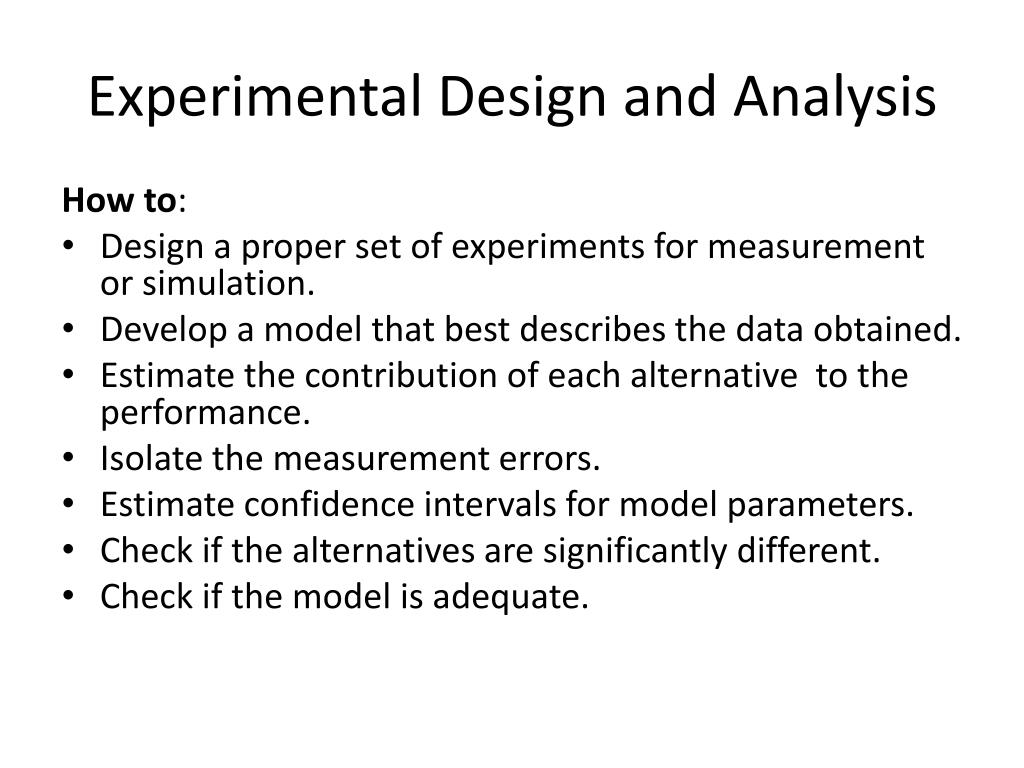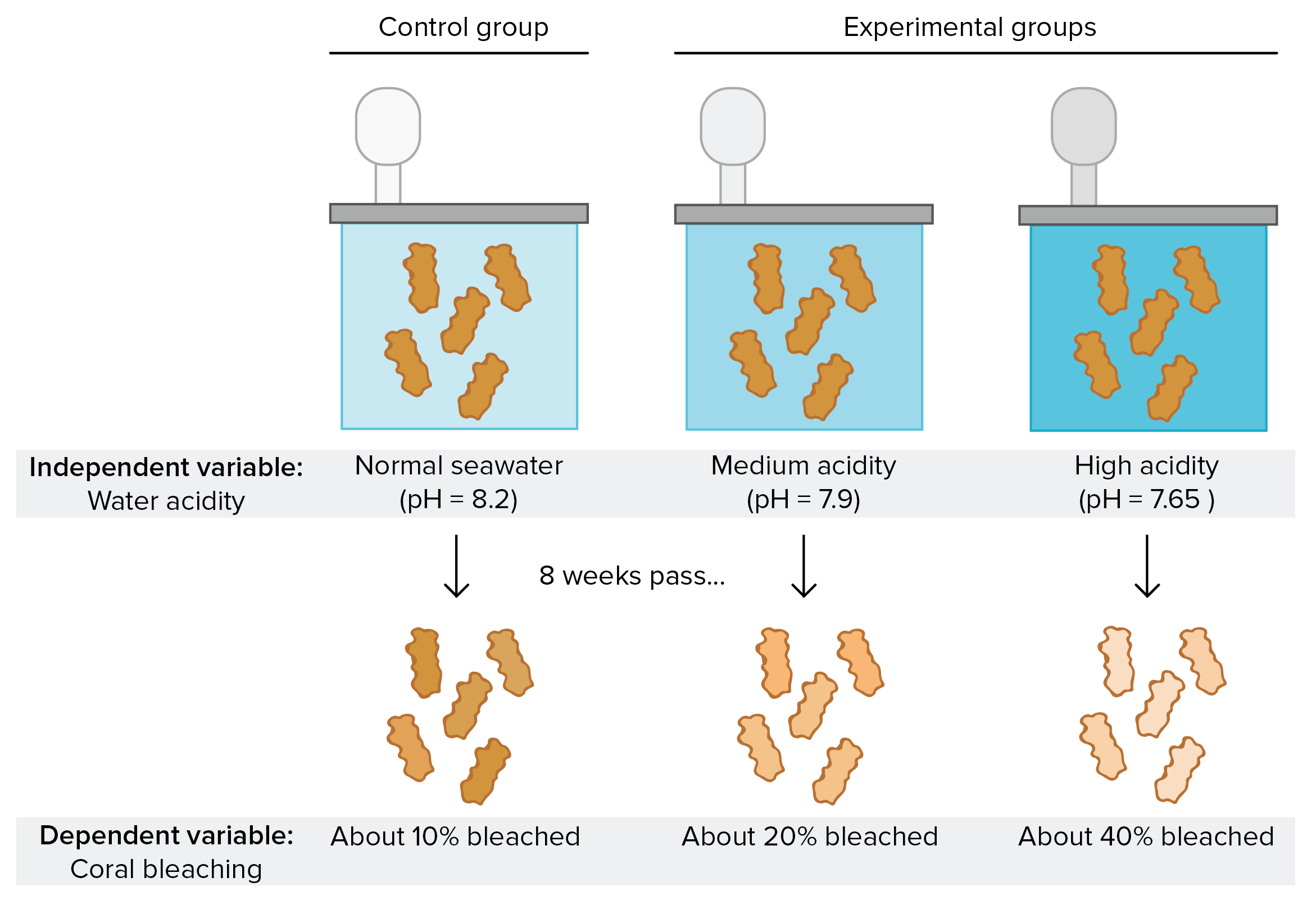Table Of Content

As a result, many ANOVA books were titled Experimental Design (see, for example, Edwards12), and ANOVA courses taught in psychology and education departments included the words experimental design in their course titles. In block randomization, the subjects of similar characteristics are classified into blocks. The aim of block randomization is to balance the number of subjects allocated to each experiment/intervention group. For example, let's assume that there are four subjects in each block, and two of the four subjects in each block will be randomly allotted to each group. However, it helps to control the balance between the experiment/intervention groups. Hence, the subjects are monitored over a period of time for occurrence of a particular disease process.

Variable
Design, fabrication, and experimental study of a full-scale compressed air ejection system based on missile ... - ScienceDirect.com
Design, fabrication, and experimental study of a full-scale compressed air ejection system based on missile ....
Posted: Fri, 14 Jul 2023 19:57:18 GMT [source]
The researcher does not do any active intervention in any individual, and the exposure has already been decided naturally or by some other factor. For example, looking at the incidence of lung cancer in smokers versus nonsmokers, or comparing the antenatal dietary habits of mothers with normal and low-birth babies. In these studies, the investigator did not play any role in determining the smoking or dietary habit in individuals. A variable represents a measurable attribute that varies across study units, for example, individual participants in a study, or at times even when measured in an individual person over time.
Case Study – Methods, Examples and Guide
This should be done by random allocation, ensuring that each participant has an equal chance of being assigned to one group. Experimental research design lay the foundation of a research and structures the research to establish quality decision making process. The research problem statement must be clear and to do that, you must set the framework for the development of research questions that address the core problems. Without a comprehensive research literature review, it is difficult to identify and fill the knowledge and information gaps. Furthermore, you need to clearly state how your research will contribute to the research field, either by adding value to the pertinent literature or challenging previous findings and assumptions. There is no order to this list, and any one of these issues can seriously compromise the quality of your research.
Experimental Design Methods
We will also notice that tests are only carried out at the end of the semester, and not at the beginning. Some examples of quasi-experimental research design include; the time series, no equivalent control group design, and the counterbalanced design. In this type of experimental study, only one dependent group or variable is considered. The study is carried out after some treatment which was presumed to cause change, making it a posttest study. Observational studies are those where the researcher is documenting a naturally occurring relationship between the exposure and the outcome that he/she is studying.
This page titled Components of an experimental study design is shared under a not declared license and was authored, remixed, and/or curated by Debashis Paul. In a blocked experiment, heterogenous experimental units (with known sources of heterogenity) are divided into homogenous subgroups, called blocks, and separate randomized experiments are conducted within each block. In addition to randomizing the treatments, it is important to randomize the time slots also.
Posttest-only control group design
Experimental research contains dependent, independent and extraneous variables. The dependent variables are the variables being treated or manipulated and are sometimes called the subject of the research. Research study design is a framework, or the set of methods and procedures used to collect and analyze data on variables specified in a particular research problem. In a within-subjects design, each participant experiences all conditions, and researchers test the same participants repeatedly for differences between conditions. In a between-subjects design, every participant experiences only one condition, and researchers assess group differences between participants in various conditions.

Molecular design and experimental study on the alkylation of benzene with C6 olefin dimer with Lewis acidic ... - ScienceDirect.com
Molecular design and experimental study on the alkylation of benzene with C6 olefin dimer with Lewis acidic ....
Posted: Mon, 01 Jan 2024 08:00:00 GMT [source]
This design involves grouping participants within larger units, such as schools or households, and then randomly assigning these units to different treatment groups. Loosely speaking, sample size is the number of experimental units in the study. In a study of the effects of colors and prices on sales of cars, the factors being studied are color (qualitative variable) and price (quantitative variable). Whether you want to know how the public will react to a new product or if a certain food increases the chance of disease, experimental research is the best place to start. Begin your research by finding subjects using QuestionPro Audience and other tools today.
Experimental design is a powerful tool for advancing scientific knowledge and informing evidence-based practice in various fields, including psychology, biology, medicine, engineering, and social sciences. Experimental design is a process of planning and conducting scientific experiments to investigate a hypothesis or research question. It involves carefully designing an experiment that can test the hypothesis, and controlling for other variables that may influence the results. Typically, the researcher designs the treatment and randomly assigns subjects to control and treatment groups.
Cohort studies: prospective and retrospective designs
Condition one attempted to recall a list of words that were organized into meaningful categories; condition two attempted to recall the same words, randomly grouped on the page. To compare the effectiveness of two different types of therapy for depression, depressed patients were assigned to receive either cognitive therapy or behavior therapy for a 12-week period. Experimental research helps a researcher gather the necessary data for making better research decisions and determining the facts of a research study. Video recording involves recording participants’ behavior or interactions using cameras or other recording equipment. This method can be used to capture detailed information about participants’ behavior or to analyze social interactions. Archival data involves using existing records or data, such as medical records, administrative records, or historical documents, as a source of information.
This is a no equivalent group design example because the samples are not equal. By evaluating the effectiveness of each teacher’s teaching method this way, we may conclude after a post-test has been carried out. Let us consider an academic institution that wants to evaluate the teaching method of 2 teachers to determine which is best. Imagine a case whereby the students assigned to each teacher is carefully selected probably due to personal request by parents or due to stubbornness and smartness. In your research design, it’s important to identify potential confounding variables and plan how you will reduce their impact. If your study system doesn’t match these criteria, there are other types of research you can use to answer your research question.
The experimental results can provide a certain theoretical basis for the design of cockpit lighting environment. The independent variables are the experimental treatment being exerted on the dependent variables. Extraneous variables, on the other hand, are other factors affecting the experiment that may also contribute to the change.
ANOVA is a statistical technique used to compare means across two or more groups in order to determine whether there are significant differences between the groups. There are several types of ANOVA, including one-way ANOVA, two-way ANOVA, and repeated measures ANOVA. This involves systematically varying the order in which participants receive treatments or interventions in order to control for order effects.
Furthermore, the paper discusses the timing of pre-tests and post-tests, the intricacies of experiment design, and emerging trends such as internet-based experiments and ex post facto research. Through a comprehensive examination of experimental research methodologies, designs, and applications, this paper aims to provide researchers with a nuanced understanding of experimental inquiry across diverse academic domains. Research designs are broadly divided into observational studies (i.e. cross-sectional; case-control and cohort studies) and experimental studies (randomised control trials, RCTs). Each design has a specific role, and each has both advantages and disadvantages. Moreover, while the typical RCT is a parallel group design, there are now many variants to consider. It is important that both researchers and paediatricians are aware of the role of each study design, their respective pros and cons, and the inherent risk of bias with each design.

No comments:
Post a Comment